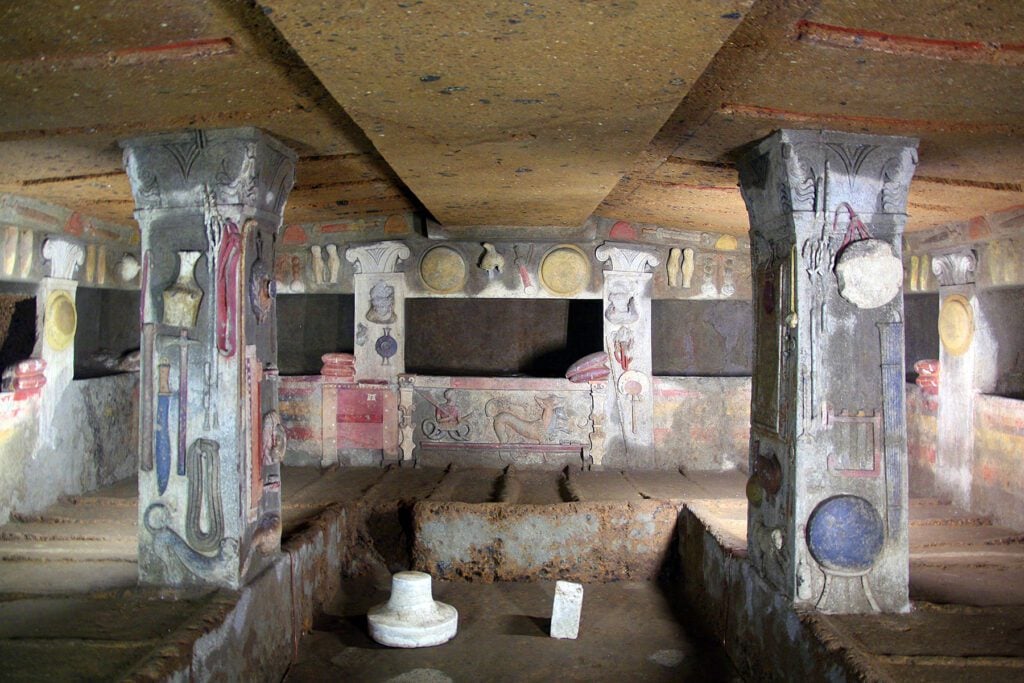One can find exciting things just by digging up one’s backyard. An old coin, fossils, and maybe artifacts from centuries ago. Imagine the surprise when an ordinary gardener uncovered a historic tomb in his backyard.
A cross-shaped Etruscan tomb dating back to before Christ was discovered in 1983 by a gardener in Perugia, Italy, who was digging a garden plot in his backyard.
Etruscan Civilization
The Etruscan civilization was argued by many of the great minds of the ancient world, including Herodotus and Dionysius of Halicarnassus. But by historical findings, the chief towns of the Etruscan society were founded in the mid-seventh century.
It is also believed that the Etruscans had a significant impact on the history of Rome. It was known that the Etruscan dynasty of Tarquins ruled from 616 BC to around 509 BC. Etruscan power was at its highest around the last quarter of the sixth century.
The Etruscans’ decline of power started around when the Etruscans were chased out from Rome in 509 BCE, as depicted in the account of Tarquinius Superbus’ expulsion, the intervention of Lars Porsena Clusium, and the Latin triumph over Aruns Porsena’s son.
Romans eventually merged with Estrucan cities and dominated the culture at around 396 BC. (Source: Britannica)
The Cross-Shaped Tomb
In 1983, a gardener in Via Guido Pompili dug in his backyard to start a vegetable garden. The gardener inadvertently penetrated the vault of one of the tomb’s entrance halls. In the shape of a cross, the tomb is one of only a tiny number of Etruscan burial sites that have been scientifically excavated in their original, intact state. Scientists later found out that the tomb’s construction dates back to the time before Christ.
During the discovery, the travertine slab at the entrance has remained in place, and animal bones and earthenware discovered just inside the door show remnants of funeral feasts. The unburned male remains were found in a sandstone sarcophagus placed against the center cell’s back wall.
The sarcophagus had to have been built at a time when inhumation was being phased out in favor of cremation, and it was probably used for the burial of the hypogeum’s founder. Despite the lack of an inscription, the urn to the right of it is most likely that of his eldest son. If so, the founder’s name was Vel Cai Catu.
Around these urns, fifty cinerary travertine urns were placed chronologically. They are all engraved and belong to male Cai Cutu family members. The inscriptions refer to approximately 30 female family members as the deceased’s mothers.
On the floor of the room to the left, a complete set of armor, consisting of a bronze shield, a shin-guard, an iron sword, and two bronze shards of a helmet, was unearthed. It had to have belonged to one of the original men buried here, but it was placed next to an urn from a later generation, implying that it was an heirloom. (Source: Key To Umbria)
Etruscan Culture
The Etruscan culture was renowned for its rich mineral resources and as a significant Mediterranean trading power. Its history has been adopted by Roman culture, the civilization that dominated theirs in the third century.
Even though little evidence of the Etruscan civilization survives, its culture has significantly influenced Roman society. Etruscan art is found in Roman tombs and burial sites. Etruscan influence on Roman architecture is also apparent, with Tuscan columns supporting much of Roman buildings, to name a few. (Source: World History)
